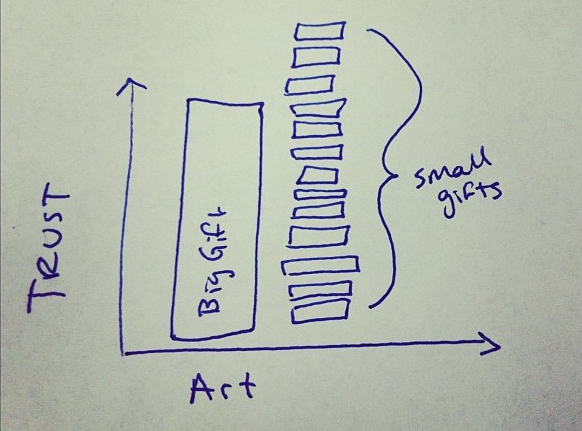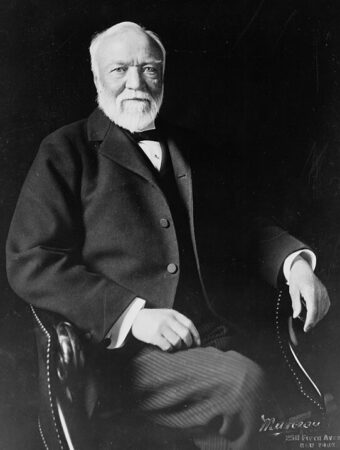Before developing a systematic approach to using social media as an author, I’m spending some time studying how authors are using social media effectively. Before I can even get started, though, I’ve been struggling with the question of “why?” How do I know if what I’m doing is working or not? It is a question that is bigger than metrics because every social media guru on the planet has warned us against thinking about social media in terms of ROI. So, what are all the possible ways to measure social media success and which one should I focus on as a writer?
Social Media Metrics
I don’t know if this is all-inclusive or not (chime in down in the comments section if you have others), but here are all the metrics I can think of regarding social media:
- Likes, Followers, Fans, etc. Per Profile/Page
- Reach Per Post (or Potential Reach, Impressions)
- Engagement (likes, RTs, favs, comments, shares, etc.) Per Post
- Page (and Tab) Visits or Impressions Per Page
- Clicks Per Post
- Visits Per Post
- Visits Per Page
- Visits Per Network
- Conversions Per Network
- Conversions Per Page
- Conversions Per Post
- Impressions Per Person
- Engagement Per Person
- Clicks Per Person
- Conversions Per Person
Per Platform, Per Page, Per Post, or Per Person?
I’m sure there are a lot of different ways to say this, but this should be a start. Essentially, what I’ve realized is that you can judge the success of social media by the
- Platform / Platform (Facebook, Twitter, Pinterest, Instagram, etc.)
- Page / Profile (personal account, business account, etc.)
- Post (status update, tweet, pin, photo, video, etc.)
- Person (the fans, followers, friends, etc. that are connected to you)
I like to keep things simple and I don’t have enough time as a writer to track a dozen different metrics. I like the Lean Analytics approach of choosing one metric that matters (obviously I’m cheating here since I’m looking for one metric that matters in social media).
So, the first question is what should I measure: Platform, Page, Post, or People?
After that I can make a decision on how to measure it (reach, engagement, shares, clicks, conversions, etc.).
Then I can decide on a goal or a benchmark to strive for.
. . . right?
I’m getting ahead of myself. I still need to answer the BIG question: why use social media at all?
1,000 True Fans
Whenever he talks about book marketing best-selling author, Tim Ferriss, references an article called “1,000 True Fans” by Kevin Kelly. He credits the method in that article for his runaway success in the 4-Hour Work Week.
Here is how Kevin Kelly defines a “true fan”:
A True Fan is defined as someone who will purchase anything and everything you produce. They will drive 200 miles to see you sing. They will buy the super deluxe re-issued hi-res box set of your stuff even though they have the low-res version. They have a Google Alert set for your name. They bookmark the eBay page where your out-of-print editions show up. They come to your openings. They have you sign their copies. They buy the t-shirt, and the mug, and the hat. They can’t wait till you issue your next work. They are true fans.
Translate this into social media: a true fan will engage with everything he or she sees. That seems like a good goal, right?
So, how do you get people to become true fans? In my experience:
Build trust. Give gifts.
Make something big that helps a lot or help a lot by making small things.
Give something big that helps a lot or help a lot by giving small things.
Or maybe we need a mixture of both:
Big things are books and blog posts. Videos, webinars, and podcasts could be big too.
Social media posts are small, but they can be created much more frequently. Facebook, Twitter, Instagram, Pinterest, Google+, etc. these are opportunities to help a lot with small gifts.
Is it possible to measure per person engagement?
Have you heard of social CRM (customer relations management)? I have, but I’ve never really used it.
A long time ago I used a company called GIST to organize my contacts but mostly for tracking email engagement. There has to be a good Social CRM out there that can tell me X number of people have engaged with my social media posts more than Y number of times. A quick bit of Googling says that Nimble might be the best answer? $15/month isn’t a bad price. I’ll come back to this question another day.
Regardless of whether I can measure “per person” metrics like “engagement per person,” I can guess what it takes to earn a true fan for life based on prior experience:
Share good stuff.
Sometimes it will be good and sometimes it will be bad. The worst thing I could do, however, is stop sharing at all out of fear that it might be bad.
Defining Goals
This has probably been implicit up this point, but it’s so easy to forget about our goals outside of social media. It is also easy to get addicted to “vanity metrics” that boost our ego but don’t help us reach our true goals.
What would our goals be as authors, regardless of whether we use social media or not?
What do we want out of being an author? What do we want people to do? The things that come to mind (not just for me but for all authors) might be:
- Buy my book.
- Share my book (or buy it for others).
- Buy my other books too.
- Hire me to speak.
- Hire me as a consultant.
- Come to my event.
- Buy my other products or merchandise.
- Join my membership site or online course.
Each of these goals enable us to deliver our art in different ways. At the same time, though, they are really just business goals. They are what help support us as writers and put food on the table. They are important goals, but we’re not just any kind of salesperson. If we were, we wouldn’t be very good artists. Yes, we’re entrepreneurs, but we’re authors too.
People hire us or buy our books because we offer something more than the everyday commodity. They hire us because we are unique and have something to say.
So . . .
What about larger, mission-driven and vision goals that connect us and inspire us? We want people to:
- Spread an idea.
- Join a common mission.
- Support a cause.
- Change their lives.
- Change the life of another.
There is no better way I know of to do any of these things than to write and share a book.
At the same time, though, we need to get the book into people’s hands. We need to explain what the book is about again and again and again.
I don’t know if any of these “mission-driven goals” are measurable, but I don’t care. They express what we’re really aiming for, right?
Bottom Line: Measuring the success of a post or a page won’t help.
It is so easy to get addicted to the numbers. Likes, shares, retweet, reach, clicks, conversions, etc. As an author and an artist, these things can hold you back. Rather than taking risks and producing art, you are stunted by the fear of not being good enough. Of not getting the likes, shares, retweets, and clicks you hoped for.
Those metrics are fuel for the Resistance. They don’t help an author create her art.
We have to focus on the person, but not what he says or does right away. Art doesn’t work like that. It doesn’t always have an immediate effect on people. So, we need to be excellent at communicating our cause, our idea, our gifts.
If we’ve signed up for life-altering work, one tweet, one post, one picture, isn’t going to get the job done. But a lot of tweets, posts, and pictures all supporting the life-changing ideas in our books might be the trick.
If we lived in an age where books could speak for themselves, we wouldn’t be having this social media conversation in the first place.
Better Goals and Better Questions Leads to Better Art
My art–and the art of most other authors I know–exists in books, blog posts, videos, slideshows, and audio recordings. But these things are only recordings of ideas. They are tangible guideposts to something greater.
It’s the ideas that matter.
So, this leads me to even more questions I must ask myself regarding social media.
How can I get people to spread my idea(s) (or ideas I love) with small, sharable gifts each day?
OR:
How can I help change someone’s their life today with a small, sharable gift?
How can I help someone change the life of another with a small, sharable gift?
OR:
How can I get people to spread an idea that changes lives?
AND THEREFORE:
What can I create that will change lives? How can I present it in such a way that it will be shared? How can I do that daily?
Conclusions
I have a long way to go before I come up with the effective, systematic approach to social media that I am aiming for as artist.
Based on the thought-process in this post, however, here are some principles I’m going to test:
- Ignore engagement. The number of post likes, shares, retweets, +1, and pins will vary and slow you down.
- Focus on big ideas first: life-changing ideas expressed in works of art.
- …then share those ideas in 365 different ways, each day. (Or at least enough times to get the idea to spread.)
The challenge is to do the daily sharing in such a small amount of time (20% or less), that most of my time (80% or more) can be spent dreaming up the ideas and creating art that matters.
(Image credit: redjar)




